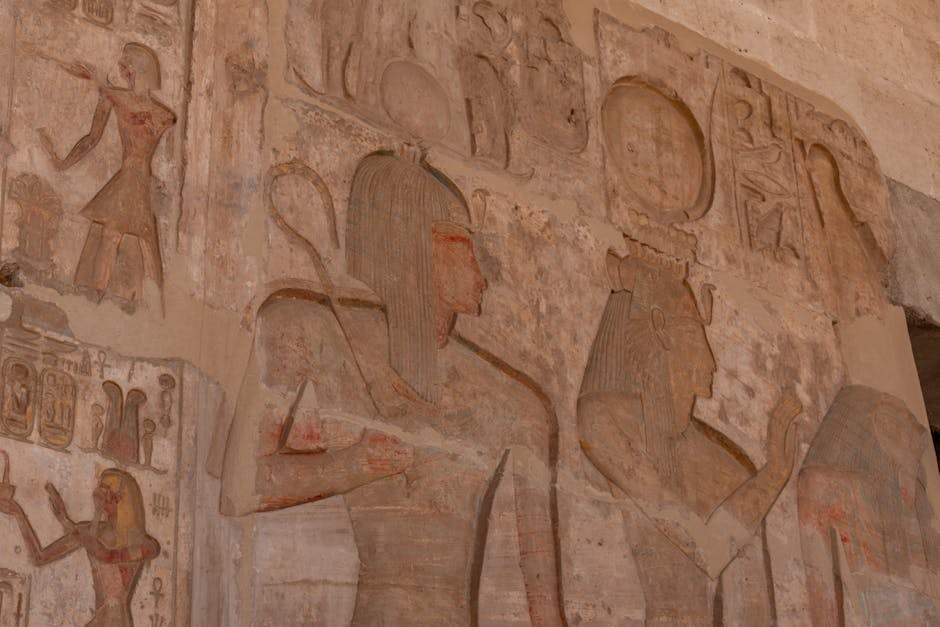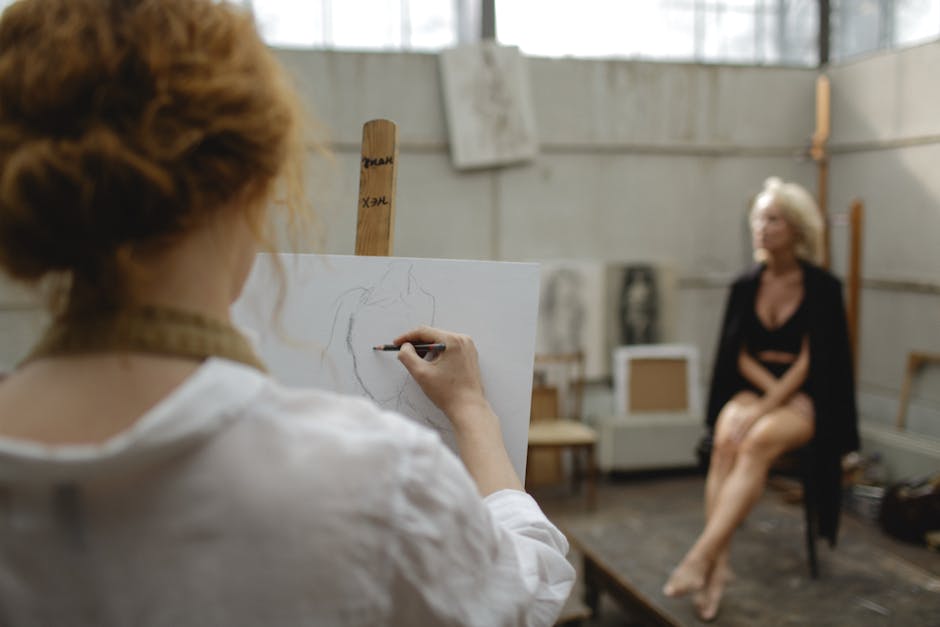Throughout history, art has played a significant role in healing, providing solace and comfort in various forms. From ancient civilizations to modern healthcare settings, the use of creative expression has been a constant companion in the journey towards well-being. By examining the historical and contemporary applications of art in healing, we can appreciate its timeless impact on mental and physical health.
Historical Use of Art in Healing
Ancient civilizations understood the power of art profoundly. In ancient Egypt, priests used rhythmic chants and music to combat illness, believing that certain melodies could drive away evil spirits. The temple walls, adorned with intricate paintings, doubled as visual sanctuaries. The imagery wasn't just decoration; it played a role in healing, creating a space where both the mind and body could find peace.
In ancient Greece, the god Apollo ruled both music and medicine. Greeks would gather in amphitheaters to watch dramas—tragedies and comedies alike—because they believed in catharsis, the purging of emotions. This wasn't merely entertainment; it was a psychological cleanse.
Traditional Chinese medicine frequently used calligraphy, not just as an artistic discipline, but as a form of meditative practice. The strokes of the brush were believed to channel inner energy, or Qi, balancing the body's life forces.
In the Middle Ages, European monasteries became hubs of artistic healing. Monks engaged in illuminated manuscripts—a blend of intricate designs and sacred texts. The very act of creating these pages was therapeutic, a meditative process that imbued both the monks and their viewers with a sense of tranquility.
Today, these historical roots have woven themselves into modern healthcare settings. Art on the walls, music in the lobbies, and gardens designed for contemplation create environments where healing is as much about the spirit as it is about the body. The Mayo Clinic, for example, integrates arts deeply into their healthcare model, offering programs like "Arts at the Bedside," where patients engage in hands-on artistic activities.1
In psychiatry, creative arts therapies draw directly from these ancient practices. Licensed therapists use drawing, dance, music, and drama to help patients with conditions like depression and PTSD. The approach isn't about crafting masterpieces; it's about harnessing the healing power inherent in the act of creation itself.
The evolution of art as a means to heal—from Egyptian chants and Greek theater to modern-day hospitals and therapy rooms—illustrates a timeless truth. Art isn't just a luxury; it's a fundamental aspect of human well-being. It offers a sanctuary for the mind, a balm for the spirit, and a bridge between ancient wisdom and contemporary life.

Creative Arts Therapies
Creative arts therapies cover a spectrum of activities designed to heal mind and body alike. These aren't mere artistic indulgences but structured therapies facilitated by licensed professionals.
- Music therapy: Not about hitting the right notes but about hitting the right emotional chords. A licensed music therapist might use a patient's favorite songs to evoke memories and emotions that can be worked through in a therapeutic setting. For individuals with Alzheimer's, familiar melodies can stimulate cognitive functions, unearthing buried memories that offer a sense of identity and reality.
- Dance therapy: Takes a more kinetic approach, leveraging movement to engage both the mind and body. The physicality of dance offers a way to express emotions that words might stumble over. Dance therapists guide patients through exercises that improve flexibility, reduce stress, and promote emotional resilience.
- Writing therapy (bibliotherapy): Offers a solitary, introspective journey. A therapist might ask a patient to pen down their feelings, craft a story, or engage in guided imagery through words. For those battling depression or PTSD, writing can serve as a mirror, reflecting inner struggles and facilitating emotional release.
- Visual arts therapies: Involve everything from painting and sculpture to digital art. The tactile experience of molding clay or the visual satisfaction of blending colors can have profound effects on emotional health. Visual art therapy is particularly beneficial for children and individuals who find verbal communication challenging.
Clinical benefits observed across these therapies are numerous and backed by a growing field of research. Art therapies have been shown to reduce cortisol levels, boost serotonin production, improve focus, elevate self-esteem, and foster emotional resilience.2 For children with autism, art therapies can unlock new avenues of communication, providing a language free of words to express their unique perspectives.
Even in terminal illnesses, where the focus might be on palliative care, art therapies offer a chance for patients to reclaim a sense of control and joy in their remaining time. The process shifts the focus from two-dimensional clinical treatment to a more holistic approach that values emotional and spiritual well-being.
These therapies underscore a crucial point: healing is not a one-size-fits-all process. Whether through music, movement, writing, or visual expression, creative arts therapies offer diverse paths to healing, designed to meet specific health needs and goals.
Mental Health Benefits of Art
The impact of art on mental health is significant. Engaging with art—whether through production or appreciation—can greatly improve mental well-being.
Art's ability to reduce anxiety is supported by scientific evidence. A study published in The Arts in Psychotherapy shows that simple artistic exercises like coloring mandalas activate reward pathways in the brain, releasing "feel-good hormones" such as oxytocin, dopamine, and serotonin.3 This evidence supports the therapeutic effect of art on everyone, not just those with a creative bent.
Art also benefits focus. The process of engaging in an art form promotes a state of 'flow,' similar to deep meditation. Dr. Daisy Fancourt's work at University College London uses group drumming interventions to enhance cognitive functions and reduce anxiety.4 In children, especially those with autism or attention-deficit disorders, art activities can significantly improve focus and assist in managing their unique challenges.
Improving self-esteem through art has a more intricate pathway. When engaging in art, individuals often reveal layers of self-perception and hidden potential. Adam Bambrough's Wellbeing in the Arts initiative assists creative professionals grappling with mental health challenges. Whether through performance arts or visual arts, creating something tangible provides a sense of accomplishment and personal value.
"Just a couple of minutes a day can be therapeutic,"
explains Frank Clark, MD, a psychiatrist and poet, aligning artistic engagement with physical exercise.
A pivotal study published in Art Therapy found that making art for about 45 minutes significantly reduced cortisol levels. Participants described the experience as therapeutic, educational, and fun.5
The American Art Therapy Association highlights how art therapy facilitates communication in nonverbal children or those with autism, enabling them to express emotions without the need for words.
For older adults, activities like community singing not only trigger cognitive improvements but also provide social interaction, combating isolation. Similarly, reminiscence therapy using photos and music can enhance cognitive functions and quality of life in dementia patients.
Art's utility isn't restricted to clinical settings. Its therapeutic essence permeates everyday life, promoting overall well-being. Music might soothe sleep issues, a calming painting could reduce the anxiety of hospital patients, or a drawing session might distract from acute pain.
In conclusion, the varied mental health benefits of art—from reducing anxiety, enhancing focus, to improving self-esteem—are firmly rooted in both historical practices and modern research. Art proves itself as a versatile and invaluable asset in promoting mental health and emotional well-being.

Art Therapy for Specific Populations
Children with autism often face challenges in verbal communication, making traditional therapy methods less effective. Art therapy uses visuals and tactile experiences to bridge this gap. For a child like Lucas, painting becomes a vital communication tool. The colors and shapes he creates offer a visual language to express emotions and thoughts. Studies show art therapy facilitates emotional expression and enhances communication in children with autism.1
For teenagers with social anxiety, like Emma, art therapy provides a non-verbal outlet. Creating collages of feelings allows Emma to express herself without the pressure of direct conversation. This process can reduce social anxiety by shifting focus from worries to creativity. The therapist uses Emma's artwork as a talking point, gently guiding her to discuss her feelings in a non-threatening way.
For elderly individuals with dementia, like Helen, art therapy takes another form. Reminiscence therapy encourages creating art inspired by the past. As Helen paints scenes from her childhood or recreates favorite songs visually, her memories come alive. This process improves cognitive function and emotional well-being, providing mental stimulation and a sense of continuity.
These case studies show how art therapy adapts to different needs, becoming a versatile tool for healing and self-discovery across various age groups and conditions.
Art in Everyday Life
Engaging with art daily can significantly impact mental well-being, often in simple forms. After a stressful day, strumming a guitar can be meditative, offering a way to decompress. Studies show that playing an instrument, even casually, activates multiple brain areas, improving cognitive function and emotional regulation.2
Doodling, far from being a mere distraction, can enhance focus and memory retention. Research shows this simple art form stimulates creativity and reduces stress. The National Endowment for the Arts notes that brief artistic activities can enhance psychological resilience and reduce cortisol levels.
Benefits of Community Art Programs:
- Foster social connections
- Reduce feelings of isolation
- Provide hands-on creative experiences
- Improve mood and community belonging
Hospital programs like "Arts at the Bedside" at the Mayo Clinic engage patients in creative activities, offering a mental distraction and emotional uplift during their stay.
"Painting watercolors each evening eased my anxiety and built resilience." – Emily, high school teacher
Whether it's a solitary sketch or a group project, everyday engagement with art contributes to a more balanced life. It's not about creating masterpieces, but about the process itself – a universal way to heal and elevate our daily experiences.

Photo by caaaaaaaaaio on Unsplash
Art's power to heal and connect underscores its importance in our lives. Whether through ancient practices or modern therapy, creating offers a sanctuary for mind and body. Embracing art daily is a step towards a healthier, happier existence.
























